April 28, 2024 | 13:20 GMT +7
April 28, 2024 | 13:20 GMT +7
Hotline: 0913.378.918
April 28, 2024 | 13:20 GMT +7
Hotline: 0913.378.918
According to Ho Huy Cuong, Director of the Institute of Agricultural Science and Technology on the South Central Coast, dragon fruit trees have long affirmed their position in Binh Thuan province thanks to its dry and windy weather while dragon fruit - a drought-resistant plant can grow well in such weather conditions.
However, recently, farmers in Binh Thuan had to demolish thousands of hectares because of the congested consumption and falling prices.
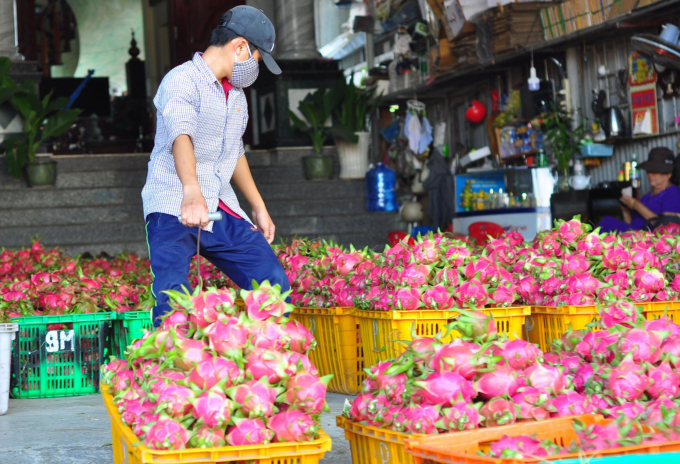
Binh Thuan dragon fruit farming is paying a heavy price for depending too much on China’s dragon fruit import. Photo: M.H.
Cuong said that for a long time, the dragon fruit consumption market was "frozen" due to the impact of the COVID-19 pandemic and China’s closing market. Dragon fruit in Binh Thuan was mainly exported to the market. A series of unfavorable factors hit dragon fruit trees, making local farmers so depressed that they cut down the trees, even old ones.
“If farmers see that a tree is no longer profitable, they will cut it down to plant another tree. Later, once finding it has a high value, then return to planting. Such way of thinking and acting will cost them a lot as initial investment cost is very high,” Cuong said.
“Therefore, despite difficulties, farmers should not destroy the dragon fruit trees. They should seek a sustainable solution”, he added.
A solution for the current problem is to reorganise production, consumption, processing and export. “Dragon fruit growers must know how to look beyond. Because the output of dragon fruit is not only for the Chinese market. Many other markets also have great demand, such as Europe, Australia and many other Asian markets besides China. However, for Binh Thuan dragon fruit to penetrate the above-mentioned markets, the product must first ensure to meet their standards,” Cuong said.
Cuong said that the disadvantage of dragon fruit output already existed when it relied too much on China.
“So, it is time for the state, relevant ministries, branches and local authorities to urgently step in to promote trade. We should find out the demand for dragon fruit products of each country in the world and then identify the requirements and technical barriers they impose on dragon fruit products. Finally, we reorganise production to meet the requirements,” Cuong said.
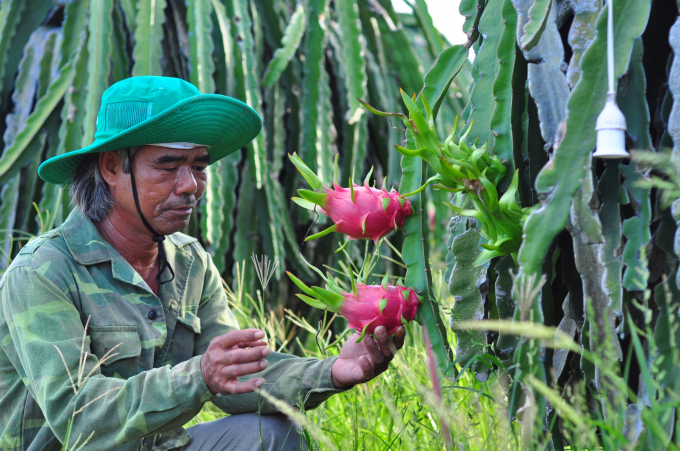
Ho Huy Cuong said that, instead of destroying dragon fruit, it is necessary to reorganise production to meet the diverse requirements of import markets. Photo: M.H.
“Dragon fruit in Binh Thuan has an advantage that is a concentrated production area with a total area of more than 30,000 hectares. To expand the market, first of all, it is necessary to build a chain link from production to harvesting, preservation, preliminary processing, processing, packaging and export. Only then can we participate in the global supply chain.
Following such a direction, Binh Thuan dragon fruit farming will be more sustainable. It will be a big problem if dragon fruit trees are replaced with other fruits. In addition to 30,000 hectares of dragon fruit, Binh Thuan currently has about 1,500 hectares of grapes, 1,500 hectares of apples and many areas of mango.
“If we now switch from dragon fruit to grow other fruits, it will again put pressure on the output of the products, and farmers will struggle again", said Cuong.
Cuong further analyzed that when the dragon fruit of Binh Thuan joined the global supply chain, its value will increase significantly because the market with strict technical barriers usually offers to buy products with higher prices.
In the past, most of Binh Thuan's dragon fruit output was only available to the Chinese market. Now, if the same output would reach other markets in the world, the pressure on consumption will be reduced.
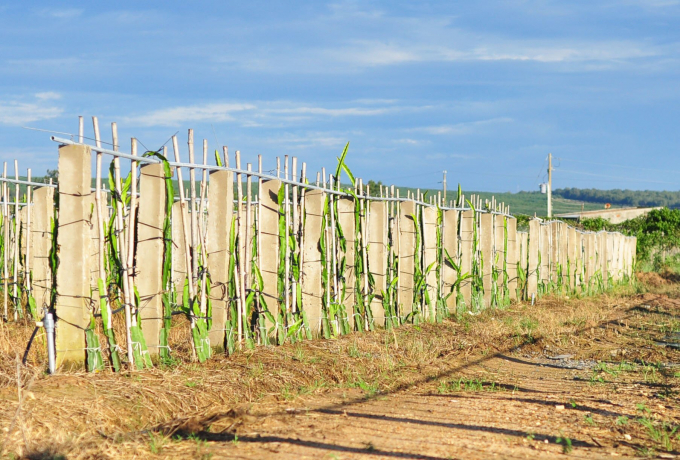
Currently, the cultivation of dragon fruit by pillars has revealed many limitations. Therefore, the current difficulty is also creating an opportunity to put the new process of growing dragon fruit by rig into production. Photo: V.D.T.
“Binh Thuan dragon fruit production must be reorganised,” Cuong said.
Currently, in Binh Thuan province, dragon fruit trees stick to the pillar to grow. Dragon fruit trees lay 30-40 branches in each crop. While each dragon fruit tree has only 20 fruiting branches, the branches that do not bear fruit are considered ineffective branches. Although they do not bear fruit, the ineffective branches still need nutrients like normal branches.
Thus, dragon fruit growers have to spend more input costs on fertiliser and watering. In addition, dragon fruit trees with thick branches will easily generate pests and diseases, dragon fruit growers will have to pay more for pesticides.
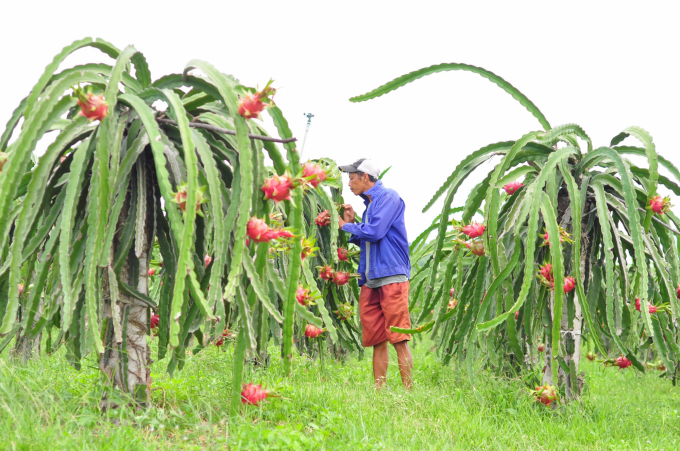
A dragon fruit plant has many branches, but nearly half of them are ineffective branches, not giving fruit. Photo: M.H.
While now, dragon fruit is no longer grown by pillars but can be grown in a way for climbing rigs. With this planting method, wherever the harvest goes, the farmers prune the useless branches, reducing input costs and controlling pests. When pesticides have been reduced, it means that dragon fruit will meet the market's requirements for safe products.
“In the past, dragon fruit growers in Binh Thuan also knew that growing dragon fruit for climbing rigs would be more efficient, or improving the irrigation system with a drip irrigation system would bring more benefits. However, it’s difficult for farmers to make changes.
Now, for the areas of dragon fruit that have been demolished, the functional sector should recommend that farmers renovate dragon fruit gardens following the new trend that uses rigs.
In particular, production must be rearranged to meet the requirements of exporting to demanding markets. As a result, Binh Thuan dragon fruit has another opportunity to export to the Chinese market through official channels. Sustainability in agriculture today is not focusing on output, but the quality must meet the requirements of the market, then it will be convenient for trade promotion and consumption", said Cuong.
Translated by Hien Anh
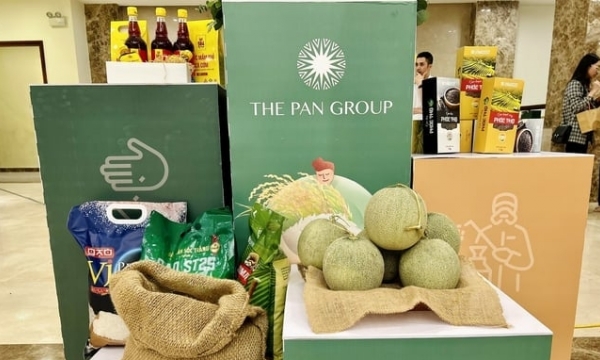
(VAN) In response to climate change concerns and economic challenges, PAN Group sets target of 12% revenue growth with natural agriculture solutions.
/2024/04/26/4910-3-173953_784.jpg)
(VAN) The Nestlé Net Zero Roadmap launched in 2020 has helped the Group transform its business operations and implement measures to reduce greenhouse gas emissions in all fields.
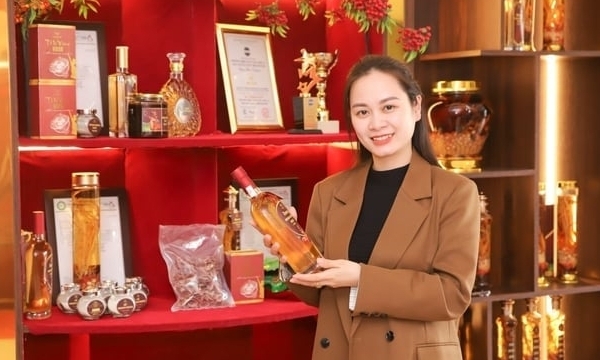
(VAN) Deer antler velvet is known as one of the 'Four Great Traditional Medicines'; however, the value-added aspect from the deep processing of deer velvet is currently overlooked.

(VAN) The three main factors causing the lack of sustainability in the growth of e-commerce in Vietnam are digital divide, digital workforce, and environment

(VAN) South Korean enterprises have increased their investment capital in the city of Hai Phong by nearly VND 400 million following a series of meetings.
/2024/04/25/4132-3-083738_65.jpg)
(VAN) On the sandy area of Ly Trach commune, the model of growing Taiwan custard apples in a 'nature-based' direction has brought high economic efficiency.
/2024/04/24/1631-vmc-vietnam-aims-to-become-a-professional-veterinary-medicine-manufacturer-for-poultry-in-the-vietnamese-market-191200_621.jpg)
(VAN) In the 20-year journey (April 24, 2004 - April 24, 2024), from a distribution enterprise, VMC Vietnam rose to become a top-quality domestic veterinary medicine manufacturer in Vietnam.